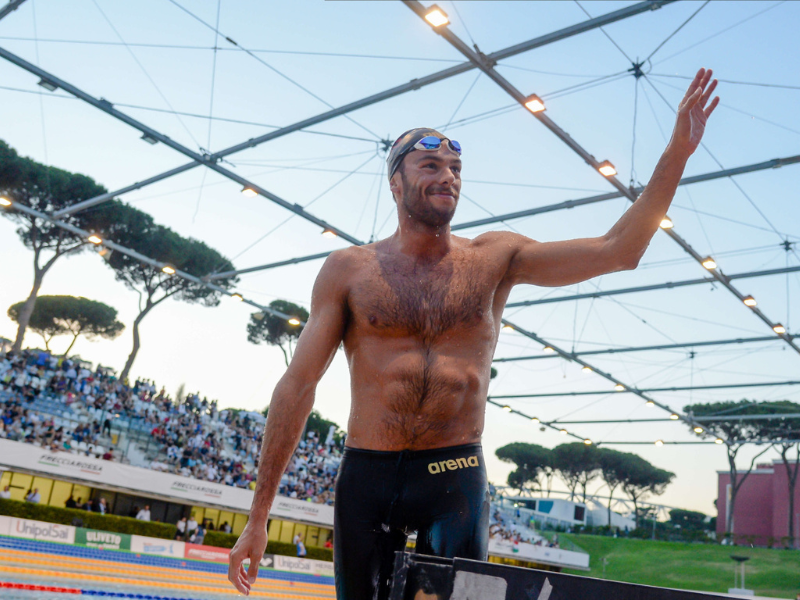The reason we like swimming so much is most likely because it was one of the first man-made activities used for survival and moving from place to place century after century. We have now engraved it into our DNA, and our relationship with water has become something very familiar.
From survival tools to sports activities
Suffice to think that the first cave inscriptions, depicting prehistoric men with the intent to swim, date back to 8,000 years ago and are found in the Cave of Swimmers, in a remote area of southwestern Egypt near Wadi Sora. In addition to running and horseback riding, swimming was one of the first sports practised by primitive tribes. In fact, the ability to keep afloat was crucial to escaping, hunting, and the transhumance of our ancestors who took advantage of the water to move entire armies.
Man has slowly acquired techniques, and styles and descriptions of natatory activities have been contributed to Egyptian and Sumerian populations, passing through the ancient Greeks. The first hieroglyphs date back to 3000 BC, but primitive forms of swimming were also practised by Native Americans. One of the most valuable finds, now preserved at the British Museum in London, is the bas-relief of Nineveh dated 880 BC. It originates from an Assyrian palace depicting warriors fleeing through a stream. Swimming also played a leading role in the sports practices of the ancient Romans, an integral part of military training.
Photo credit: Roland Unger [GFDL or CC BY-SA 3.0], via Wikimedia Commons
Swimming in modern times
Swimming became a sport in the Olympic disciplines at the end of the 1800s (Games of Athen 1896, requested by Pierre de Coubertin). In 1908, the International Swimming Federation (FINA) was founded. It coordinates international swimming competitions, synchronised swimming, diving and water polo (arena is currently the official sponsor and technical partner of FINA). And in the postwar period, with a newfound popularity of swimming pools, swimming became a sport for everyone. Today it is one of the most practised sports in the world thanks to the many benefits it offers the body and mind.
The story of styles
The Backstroke appeared in 1896 in Athens during the first edition of the modern Olympic Games. Four years later, at the Olympic Games in Paris, the 200 meters became an official Olympic sport. Breaststroke instead originates from the Orient and was brought to Europe by two Indian swimmers, Gull and Tobacconel. It then spread to the USA in the late 80s, when they started the first races. In 1908 it became an official Olympic sport at the London Games.
The youngest swimming style is the Dolphin. It made its first appearance in 1927 and debuted at the 1956 Olympic Games in Melbourne. Finally, the freestyle was done for the first time by Johnny Weissmuller in the first postwar period and was made famous for its elegance and power by Alexander Popov.
